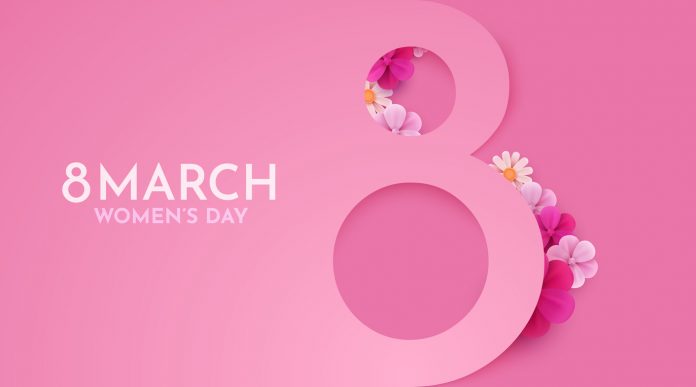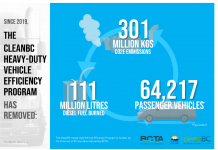
International Women’s Day (I.W.D.) is celebrated this year on March 8. In Canada and many other countries, I.W.D. has become a week-long event focusing on women, their societal role and how far they have come in fighting for equality.
Still today, in too many countries, women are considered second-class citizens.
Even in a country as free and liberated as Canada, inequality still exists between men’s and women’s rights.
The simplest way to measure the “Gender Gap” is by salary. According to Statistics Canada (2022), as of 2021, the gender pay gap for full-time and part-time employees is 0.89, which means women make 89 cents of every dollar men make.
More women are in critical roles in society and business than ever in Canada. Whether it be as politicians, doctors, lawyers, or professionals, women in increasing numbers are filling these roles. There continues to be an ongoing predominance of women in so-called traditional careers working in health care, education and as domestic and clerical staff.
Even in Canada, the so-called glass ceiling has yet to be broken.
That fight for gender equality in Canada goes back 100 years or more. By 1921, 65% of all women workers were in clerical, domestic service and professional (mainly teaching and nursing) occupations.
Women’s fight for equality in the early 20th century focused on political rights and the suffrage movement. Women won the right to vote in 1918, and by 1922 women had won the right to vote in all provinces except Québec, where the struggle continued until 1940. In 1929 women were recognized as “persons” eligible to sit in the Canadian Senate.
By 1951 women comprised 22% of the total labour force.
The women’s movement of the 1960s made many women aware of their right to independence and control of their own lives. Women joined unions and other organizations in more significant numbers. From 1971 women organized to demand greater equality in wages and working conditions and to gain recognition of their social, economic, legal and political position in society. The women’s movement also raised and debated issues such as wages for housework, pensions for homemakers and public child care.
In 2019, Canadian women 15 years and older represented nearly half (47.4%) of the labour force, compared to 37.6% in 1976—an increase of over 25%. (by population in 2019, women represented slightly more than half (50.3%) of Canada’s 37,589,262)
Gender equality or, in most cases, gender inequality is a term used to describe women’s rights and opportunities. According to the World Economic Forum, Canada is behind several “free-thinking” countries.
Canada, which usually ranks very high in global surveys on “liveability’ and ‘freedom”, is not in the top ten in the World Economic Forum list on gender equality. Iceland tops the list, followed by Finland, Norway, New Zealand and Sweden.
Sadly, there is a long list of countries where being born a woman denies you fundamental rights and freedoms. According to the Women’s International League for Peace and Freedom, those countries are Syria and Afghanistan, Yemen, Pakistan and the Central African Republic, followed by numerous Middle East and African countries.
A 2015 World Bank survey found that women remain legally discriminated against in the workplace in 155 out of 173 countries.
In the 21st century, the horrors of being born a woman in some countries are tragic and appalling.
The civil war raging in Syria since 2011 shows no sign of abating. The B.B.C. has reported that Syrian women are sexually exploited in return for humanitarian aid.
In Afghanistan, where women were stripped of their rights by the Taliban government between 1996 and 2001, gender-based violence is rampant, more than 80% of women are illiterate, and many die in childbirth.
Women in these countries live in fear and repression every day of their lives.
The World Economic Forum study in 2021 quantifies the gender gap because improving gender parity has a fundamental bearing on economies’ and societies’ growth. Fostering and developing female talent has the potential to accelerate the development, competitiveness and future readiness of economies and businesses worldwide.
While there may be a lag in pay equity, women in Canada are protected by legislation for rights and freedoms.
In Canada, promoting gender equality falls under human rights legislation. Beginning with the Canadian Human Rights Act of 1977, Canadians employed by or receiving services from the Government of Canada, First Nations governments, or private companies regulated by the federal government are protected from discrimination. The act states that “all Canadians have the right to equality, equal opportunity, fair treatment, and an environment free of discrimination based on sex, sexual orientation, marital status and family status.”
The Canadian Charter of Rights and Freedoms became law in 1982. The Charter contains two sections fundamental to protecting human rights and preventing discrimination. Specifically, protection and benefit of the law “without discrimination based on race, national or ethnic origin, colour, religion, sex, age or mental or physical disability.” It guarantees all rights covered in the Charter apply equally to men and women.
The Employment and Pay Equity Act further states “that no person shall be denied employment opportunities or benefits for reasons unrelated to ability.”
As we celebrate International Women’s Day and week and the women in our lives, perhaps we should pause to appreciate how much these women mean to us. Women that we love and cherish, admire and thank, respect and appreciate. We know them as mothers, daughters, sisters, aunts, wives, coworkers, mentors and partners. Women bring life into our world, nurture it and protect it.
The world is more beautiful, softer, and humane thanks to women. They are a guiding light for all humanity. Shame those that abuse, discriminate, mistreat and keep women down. There seems no greater cruelty of humankind than the inequalities perpetrated far and wide against women. Are we not all equal? Sadly it seems we are not.
Let’s praise and appreciate the women in our lives, not just on International Women’s Day but every day. They deserve that and so much more.





















